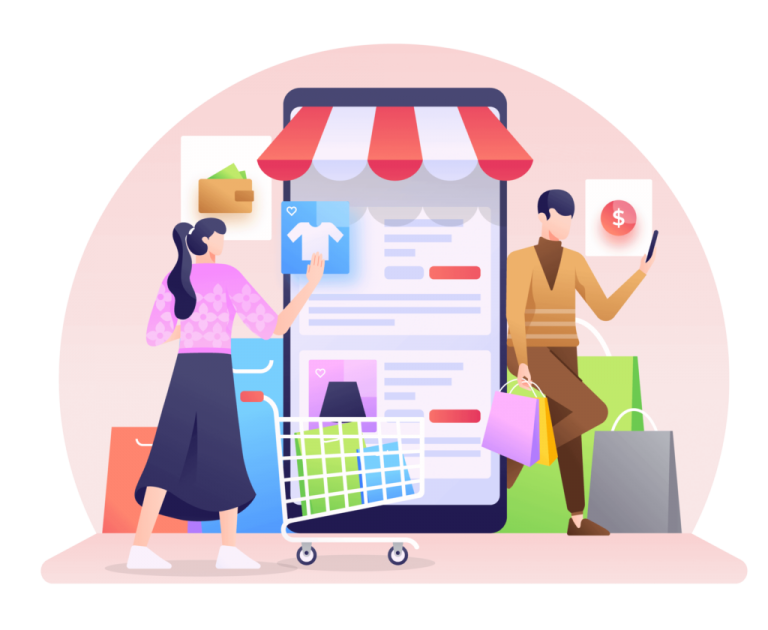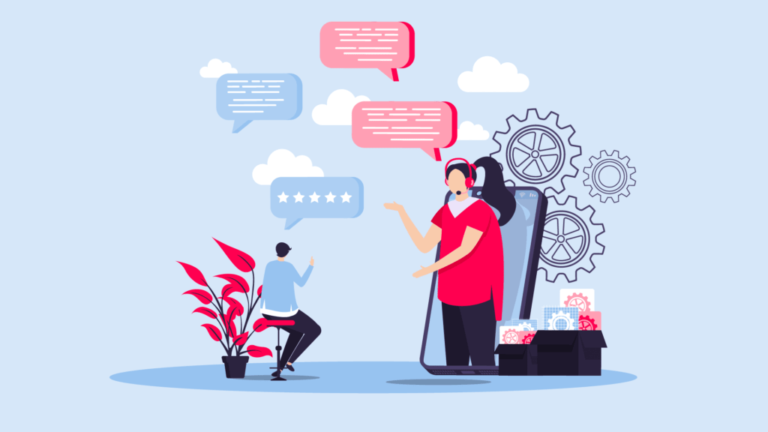How to Pre-empt Ecommerce Returns during Peak Season

The returns problem in ecommerce is real. According to Shopify, 89% of shoppers have returned an online purchase in the last three years, with returns costing retailers billions each year.
The issue of costly ecommerce returns is one that has exploded alongside the growth of online shopping. The cost to retailers is increasing dramatically year-on-year (see graph below) while return rates of 40% are becoming the norm for some industries.

Businesses must address the thorny issue of returns as they ready themselves for peak season.
In our E-commerce Corner episode, we spoke to three ecommerce experts from the Nordics: Nadin Kempel Sigh from Tiger of Sweden, Anneli Furustad from Improove, and Torbjörn Johansson from 5.11 Tactical.
We wanted to hear their thoughts on returns in ecommerce and the steps they have taken to try and pre-empt returns as they prepare for busy peak season sales.

The Brick-and-Mortar Divide in Ecommerce Returns
Online shopping sales increased by 300% globally in the past decade and ecommerce return rates mirror that increasing trend. A return rate of between 20-40% is consistent across ecommerce industries, whereas the rate is far lower for traditional brick-and-mortar retail – anywhere between 5-10%.
Ecommerce continues to capture a growing share of retail sales globally. This means omnichannel businesses facing high return rates are seeing their marginal economics fall alongside the growth of their business.
What’s more, these return rates tend to rise on average by 10% during the peak season of ‘Holiday ecommerce’ (see image below).

Why the Divide between Physical vs Online Return Rates?
“The main factor in the fashion industry is that people shopping online can’t go into fitting rooms and try items on. Returns are free, so people are ordering more sizes because they don’t want the trouble and time of exchanging items.
If they are in any doubt about the size, they just order 2-3 and return the ones which don’t fit.”
Nadin Kempel Sigh, Tiger of Sweden
Although sizing was the predominant reason for ecommerce returns amongst all our experts’ businesses, it wasn’t always the case. Consumers often purchase a single product in a variety of colors or types to see which looks best on them.

“The real comparison isn’t 10% for brick-and-mortar vs 30% for online, but with the items left in the fitting room of brick-and-mortar stores. That is the equivalent we are talking about for online shopping.
So, people might buy 10 items and return 9, just like they might do if they were trying on those 10 items in a fitting room with a mirror.”
Nadin Kempel Sigh, Tiger of Sweden
The ecommerce return rates can also differ greatly from item to item too:
“At 5:11 Tactical, for non-clothing items like bags or accessories we see a much lower return rate. It is generally just clothing which sees these high returns.
The strongest buying force for us are existing loyal customers. We see very low ecommerce returns amongst this group because they are familiar with our products and know their preferences already.
Then we have the people who Nadin mentioned which buy several items to find the one which fits them. Different styles and fashions are made for different brands as well. It’s therefore difficult to product a sizing guide that is consistent across our whole site.”
Torbjörn Johansson from 5.11 Tactical
What Steps Can Be Taken to Minimize Ecommerce Returns?
High ecommerce return rates were clearly an issue facing all of those we spoke to. We wanted to hear what steps they themselves had already taken or were considering in the build-up to peak season.
“As a general recommendation, I tell all my clients to optimize their product pages as much as possible. Delivering a richer media experience with a lot of images or videos with different models showing the different sizes, colors, etc, alongside reviews from satisfied customers is a good place to start.
Comparison size guides are also effective at minimizing the chance of a return. Someone who is familiar with their size in Levi jeans can see how it compares to this other specific brand of jeans.”
Anneli Furustad from Improove
Our E-commerce Corner participants echoed this need to deliver a rich-media experience; through video or proactive engagement by a salesperson.
Key assortments where you can see someone showcasing the specific items and discussing fitting and sizing all help potential shoppers visualize the product better and make a correct purchase decision.
“I recommend images, bullet points and explanation text to note special features and details about the products. Basically, anything which might otherwise have been missed by consumers.
Explain, explain, explain – the more info you can give at this stage the lower your ecommerce returns will be.”
Nadin Kempel Sigh, Tiger of Sweden

Punishing Serial Ecommerce Returners – Yes or No?
The majority of ecommerce returns occur by post and generally at no cost to the consumer.
On top of delivery costs, there are also expenses associated with processing the item once received, for example, to resell the item, increasing the overall cost to online retailers. We asked our experts to share their thoughts on punishing those who frequently return multiple items from online stores.
“I think removing free shipping or adding premium costs is a bit extreme. You definitely don’t want to be seen as a company who discourages customers to buy.
However, ecommerce brands can identify customers they don’t earn any money on – so maybe we can avoid promoting to them, by not sending the usual newsletter or targeting marketing to them and making them only pay direct (I.e. not invoice) is a good way to discourage serial returners.”
Anneli Furustad from Improove
The general consensus was that too harsh a punishment on ecommerce returners could actually hurt the company even more. Charging for return deliveries and restocking is very unpopular amongst consumers; making it unlikely retailers will start passing on return delivery costs in the future.

Learning from customers who return
In fact, Tiger of Sweden have been able to learn a lot from frequent returners. They have instructed their Customer Service department to reach out to them directly, engaging in dialogue to find out:
– What leads to the ecommerce returns.
– Which factors might be missing from their site.
– What steps could be taken to minimize returns in future.
For high fashion brands like Tiger of Sweden it’s important that customers aren’t discouraged from returning items that don’t fit. Nadin tells us:
“It’s actually important for us to get those returns as they are representing our brand in public, so we want it to fit them and for them to look good to other people who see them.”

In fact, punishing or disincentivizing returns was more likely to lead to bad reviews from disgruntled customers and Social Media comments about your brand. Punishment, it seems, is definitely not the answer.
Contacting customers and engaging in dialogue gives a more personal approach and helps optimize for improvements to be made in the future.
Rethinking Ecommerce Returns before Peak Season
Based on this feedback, the black and white view of ecommerce returns being a negative factor became less clear cut.
Engagement through conversations with frequent returners could actually provide invaluable insights and drive greater growth by building customer lifetime value.

The US-based Zappos was one of the first businesses to offer a 365-day, free two-way shipping and return policy. Customers are invited to order products, try them on, and return them if they aren’t entirely satisfied.
According to them, this lenient return policy became a driver of profit.
Our best customers have the highest ecommerce return rates, but they are also the ones that spend the most money with us and are the most profitable.”
Zappos’ VP of services and operations, Craig Adkins (Fast Company)
Our team of E-commerce Corner experts shared this view as well. Anneli had spoken to Swedish retailer Boozt, who mentioned their love of ecommerce returns; as it is an indicator that the customer trusts them.
This is because the customers aren’t worried that items will be hard to return. They’ll therefore be more likely to purchase again in future.
Loyalty programs are becoming a popular means of building upon this consumer trust. They simultaneously allow brands to gain greater insights from their shoppers.
Nadin told us how Conversational AI is helping optimize processes and grow customer lifetime value:
“We have a loyalty programme called Tiger Society. Here, customers can get unique benefits and offers, if they agree to join a club where we can track more and get hold of more marketing insights.
It gives a really valuable picture of who is buying and what their motivations are – plus it grows Customer Lifetime Value.”
Key Takeaways for Pre-empting Ecommerce Returns during Peak Season
Although detrimental in some cases, ecommerce returns don’t have to be seen as entirely negative and can be pre-empted through effective strategies.
Many retailers are still discovering strategies like media-rich pages, direct outreach and Conversational AI technology, which can reshape their returns results.
As we approach peak season, retailers need to take a hard look at their returns processes. Consider some of the strategies mentioned below to prepare for the potential of rising ecommerce return rates to come:
– The most common reasons for returns are related to the fact that the product didn’t match expectations. In fashion, this is often due to wrong sizing and color codes which don’t match what was expected.
– Another natural aspect of returns in fashion is because the store fitting room has moved into people’s living rooms. People won’t buy every item that they take with them to the fitting room, and the same logic applies when that fitting room is in the customer’s house.
– There are different methods of trying to understand why customers return – the best approach for quality data is to ask the customer directly “why are you returning?” and ideally have this captured online. Remember though, keep it simple and don’t over-engineer!
– Better product descriptions and richer media experiences in terms of 360 views, videos and interactive size guides are key to help the customers buy the right product and thereby pre-empt returns.
– Product reviews are key! ⭐⭐⭐⭐⭐ Make sure to drive a behavior where your customers review the products that will be visible to other buyers.
– While it is difficult to make returns profitable, it is a key interaction point for your business with customers. Make sure this process is smooth and you will build loyalty.
📍 Most importantly: Don’t overcomplicate it! Returns will happen in ecommerce come what may. Instead of disincentivizing returns, focus on upselling and cross-selling.
Alongside this, delivering great on-site experiences will help raise CSAT scores during peak season.



